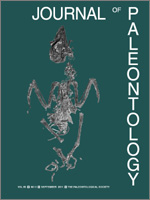A nearly complete skeleton of an adult Hawaiian flightless ibis (Apteribis sp.) was recovered from a vaulted dry lava tube in association with remains of contour feathers. This is the first documentation of the genus Apteribis from the island of Lanai and provides the only record of the nature of the plumage in any of the prehistorically extinct species of birds known from the Hawaiian Islands. Light and scanning electron microscope analyses of structure of the pennaceous and plumulaceous (downy) portions of these feathers confirmed their placement with the ibises (Threskiornithidae). Within that family, the microscopic structure of the downy feathers is most similar to that of the New World ibises of the genus Eudocimus, thus corroborating molecular evidence of the derivation of Apteribis from Eudocimus. Plumage color was a combination of brown-black and ivory-beige/light brown suggestive of that of juveniles of Eudocimus. Plumage coloration in Apteribis may thus have evolved through the same processes of paedomorphosis that gave rise to flightlessness.
How to translate text using browser tools
1 September 2011
Fossil Feathers from the Hawaiian Flightless Ibis (Apteribis sp.): Plumage Coloration and Systematics of a Prehistorically Extinct Bird
Carla J. Dove,
Storrs L. Olson
ACCESS THE FULL ARTICLE

Journal of Paleontology
Vol. 85 • No. 5
September 2011
Vol. 85 • No. 5
September 2011




